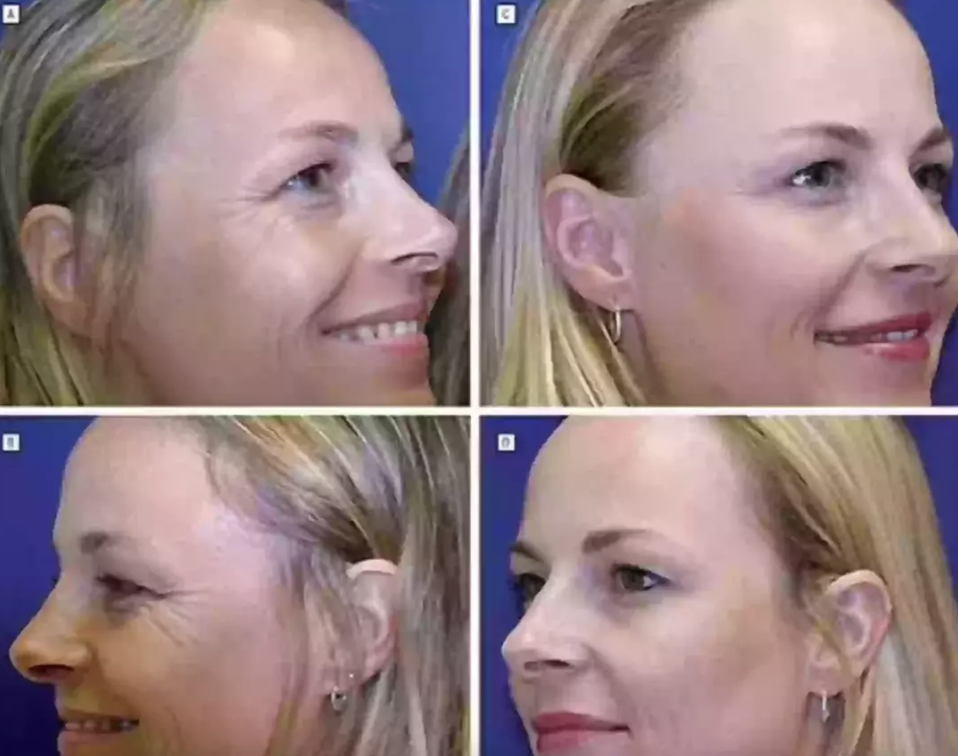A fascinating study featuring identical twins has offered a clear look at just how impactful Botox can be. One sister began Botox injections at age 25 and continued for 20 years, while the other chose not to undergo treatments. The remarkable contrast between their appearances speaks volumes about the effects of Botox over time.
Botox, a prescription drug derived from botulinum toxin, is widely used not only to smooth wrinkles but also for medical reasons such as treating migraines, muscle stiffness, and excessive sweating.
The twin who received Botox had injections two to three times a year, targeting areas like the forehead and frown lines between the eyebrows, with occasional treatment for crow’s feet near her eyes.
Dr. William Binder, the doctor responsible for the injections, began documenting their appearances in 2006 when they were both 38. Photos from that year already showed the Botox-treated twin had a noticeably smoother forehead and fewer lines around her eyes compared to her untreated sister.
Six years later, the differences were even more visible. The untreated twin showed deeper wrinkles, a broader jawline, and puffier facial features. While researchers could not definitively say this was solely caused by lack of Botox, the evidence strongly suggested the treatment helped reduce visible signs of aging.

Both sisters maintained healthy lifestyles and regularly used sunscreen, avoiding excessive sun exposure or bad habits that could affect skin quality. However, living environments differed—the sister without Botox resided in Munich, with lower sun exposure, while the Botox twin lived in sunny Los Angeles.
Dr. Binder noted that long-term Botox use helps prevent “static wrinkles,” those lines visible even when the face is at rest. He also confirmed the treatment was well tolerated over 13 years, with no adverse effects reported in their study.
Supporting these findings, Dr. Bita Farrell from California shared her experiment where she treated only one side of her face with Botox over two decades. After two weeks, the treated side looked smoother and lifted, while the untreated side showed more droop and lines.
Dr. Farrell explained that facial muscles either pull upward or downward. Relaxing the muscles that pull the lower face down with Botox allows the lifting muscles to dominate, improving the cheek and jawline’s appearance.
This effect can soften lines around the mouth, reduce jowls, and give a more youthful, contoured look to the face.
Both the twin study and Dr. Farrell’s self-experiment show that while Botox may spark debate, its consistent, long-term use can create visible and lasting improvements.


